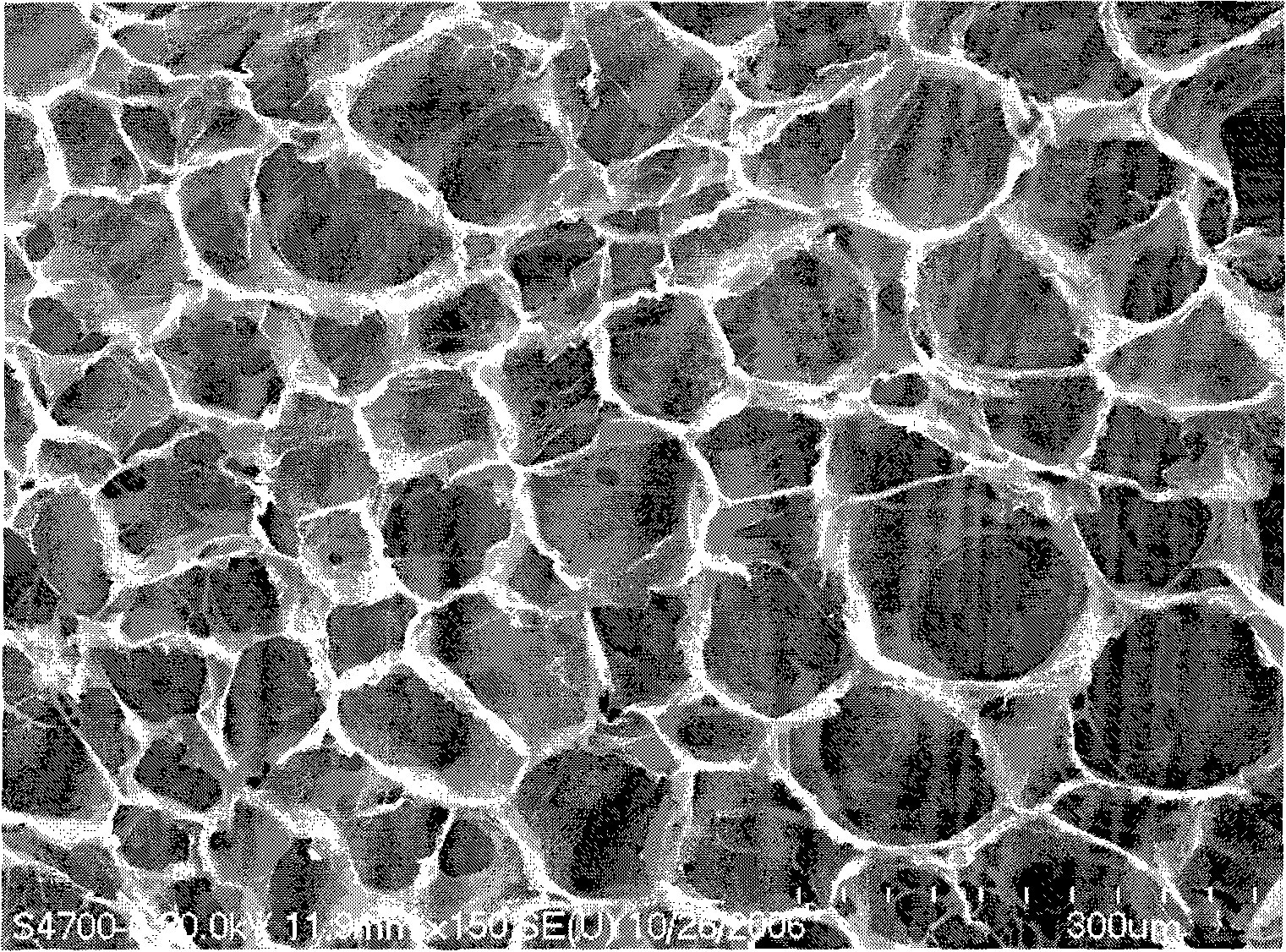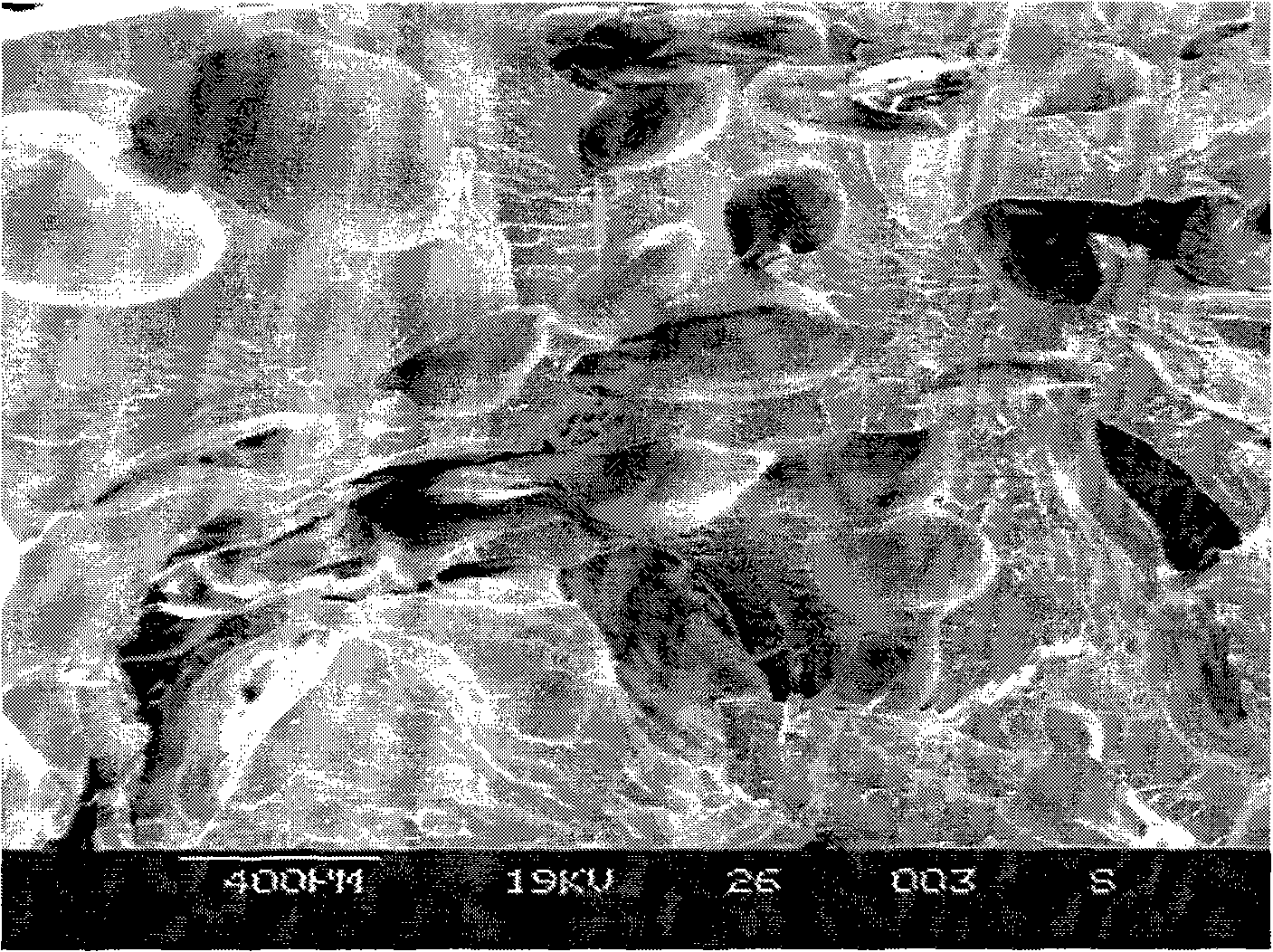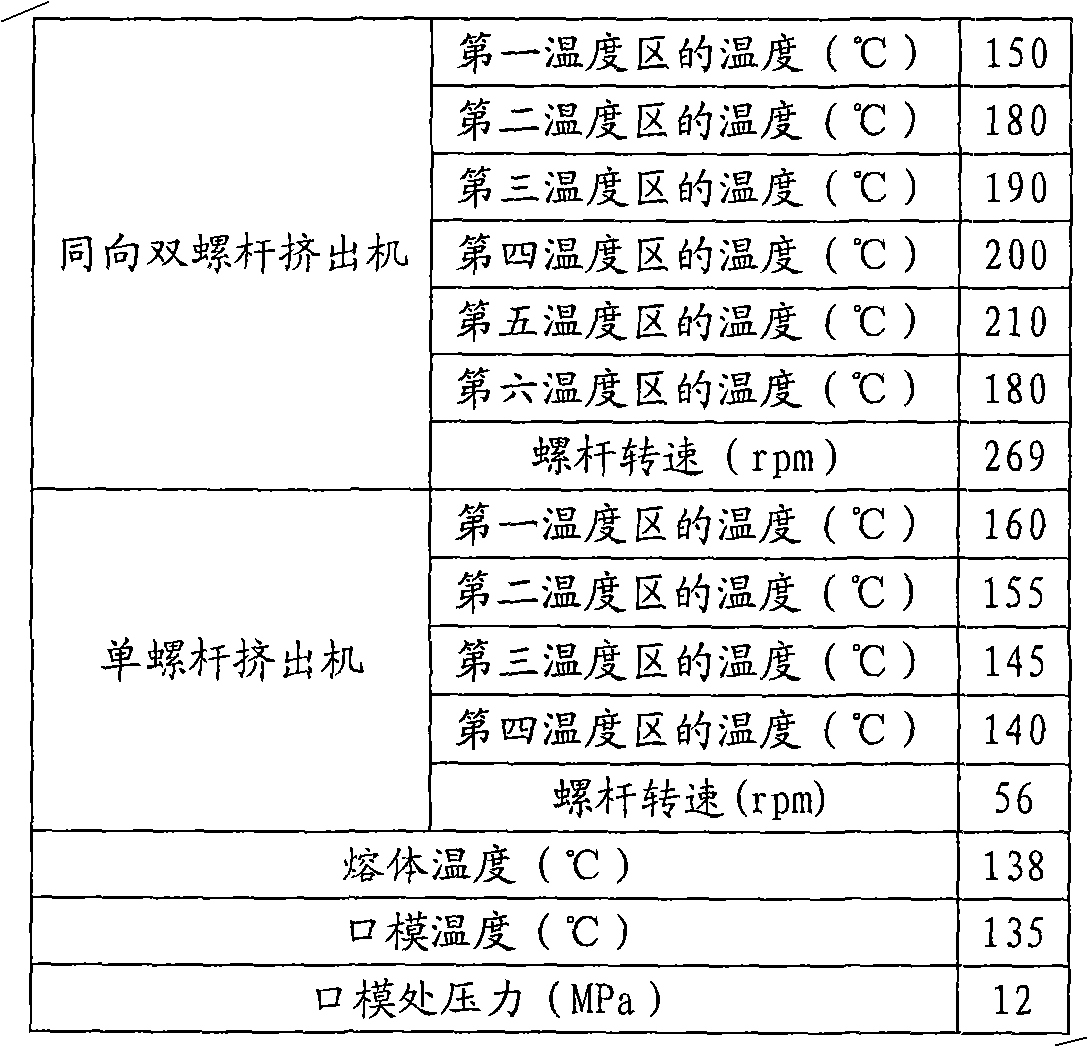Polypropylene open-cell foaming material and preparing process thereof
A porous material, polypropylene technology, applied in the field of polypropylene foamed open-cell material and its preparation, can solve the problems of flammability, explosion, environmental impact, etc., and achieve the effects of environmental friendliness, low cost, and wide source of raw materials
- Summary
- Abstract
- Description
- Claims
- Application Information
AI Technical Summary
Problems solved by technology
Method used
Image
Examples
Embodiment 1
[0039] 1) Put 97 parts of resin matrix, 1 part of talc powder with an average particle size of 0.8 μm, and 2 parts of glycerol monostearate into a high-speed mixer and mix thoroughly, wherein the resin matrix is made of 99 parts of polypropylene resin (F401 of Panjin Petrochemical, The melt flow rate (MFR) is 2.0g / 10min, measured according to the standard ISO1133:1997) and 1 part of ultra-high molecular weight polyethylene with a weight average molecular weight of 5 million;
[0040] 2) Put the mixture obtained in step 1) into a twin-screw extruder with a screw diameter of 32mm and an aspect ratio of 48 through the feeding port. The temperatures of each section of the extruder are 150°C, 170°C, 180°C, 190°C, and 190°C. , 200°C, 200°C, extruding strips through a circular die, cooling with water, and cutting into pellets to obtain a polypropylene resin composition;
[0041] 3) Add the polypropylene resin composition obtained in step 2) into a twin-screw extruder with a screw d...
Embodiment 2
[0046] 1) Put 95 parts of resin matrix, 2 parts of talcum powder with an average particle size of 0.8 μm, and 3 parts of glycerol monostearate into a high-speed mixer and mix thoroughly, wherein the resin matrix is made of 92 parts of polypropylene resin (Qilu Petrochemical Copolymerized Polypropylene EP2S34F, melt flow rate (MFR) is 1.8g / 10min, measured according to standard ISO1133:1997), 3 parts of ultra-high molecular weight polyethylene with a weight average molecular weight of 4 million and 5 parts of EPDM rubber (Jilin Petrochemical J3080) composition;
[0047] 2) Put the mixture obtained in step 1) into a twin-screw extruder with a screw diameter of 32mm and an aspect ratio of 48 through the feeding port. The temperatures of each section of the extruder are 150°C, 170°C, 180°C, 190°C, and 190°C. , 200°C, 200°C, extruding strips through a circular die, cooling with water, and cutting into pellets to obtain a polypropylene resin composition;
[0048] 3) Add the polypr...
Embodiment 3
[0052] 1) Put 95 parts of resin matrix, 2 parts of talcum powder with an average particle size of 0.8 μm, and 3 parts of glycerol monostearate into a high-speed mixer and mix thoroughly, wherein the resin matrix is made of 90 parts of polypropylene resin (Qilu Petrochemical Copolymerized Polypropylene EP2S34F, melt flow rate (MFR) is 1.8g / 10min, measured according to standard ISO1133:1997), 5 parts of ultra-high molecular weight polyethylene with a weight average molecular weight of 3 million and 5 parts of EPDM rubber (Jilin Petrochemical J3080) composition;
[0053] 2) Put the mixture obtained in step 1) into a twin-screw extruder with a screw diameter of 32mm and an aspect ratio of 48 through the feeding port. The temperatures of each section of the extruder are 150°C, 170°C, 180°C, 190°C, and 190°C. , 200°C, 200°C, extruding strips through a circular die, cooling with water, and cutting into pellets to obtain a polypropylene resin composition;
[0054] 3) Add the polypr...
PUM
| Property | Measurement | Unit |
|---|---|---|
| melt flow index | aaaaa | aaaaa |
| pore size | aaaaa | aaaaa |
| density | aaaaa | aaaaa |
Abstract
Description
Claims
Application Information
 Login to View More
Login to View More - R&D
- Intellectual Property
- Life Sciences
- Materials
- Tech Scout
- Unparalleled Data Quality
- Higher Quality Content
- 60% Fewer Hallucinations
Browse by: Latest US Patents, China's latest patents, Technical Efficacy Thesaurus, Application Domain, Technology Topic, Popular Technical Reports.
© 2025 PatSnap. All rights reserved.Legal|Privacy policy|Modern Slavery Act Transparency Statement|Sitemap|About US| Contact US: help@patsnap.com



